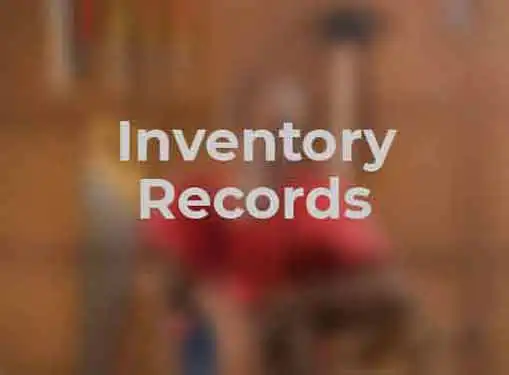Accounting for Entrepreneurs
Inventory Record
Inventory can be the key to the success or failure of your retail establishment. To turn a healthy profit, you need a first-rate inventory record system that gives you granular control over stock and merchandise.
Stop what you're doing and take a walk through your store.

See those items that are covered in a thin sheen of dust? Those items represent money that could have been spent more productively. But without a carefully designed inventory management strategy, you have little hope of avoiding those kinds of bad purchasing decisions on a go-forward basis.
Inventory record management is a cornerstone of successful retailing. Sometimes it's hard to predict which items will move faster than others. But unless you come up with a way to walk the fine line between ordering shortfalls and bloated inventory levels, your business will constantly struggle to meet cash flow requirements and profitability targets.
Inventory management begins with the creation of an inventory record that has been tailored to your store's ordering parameters and continues with a handful of best practices that should be applied in any retail environment.
Inventory Records
An inventory record is designed to track all of the elements necessary to maintain stock at adequate (but not inflated) levels. It's typically a paper or spreadsheet form that is used for ordering and inventory assessment routines. Although form categories vary according to specific business needs, some of the most common data fields include item, supplier, date & quantity ordered, date & quantity received, quantity sold and current inventory level. It's important to include an indicator of the quantity that has been sold so inventory managers can monitor for shrinkage.
Management Practices
- Stay lean. Dormant inventory is a drain on your operation's capital resources. Your inventory management goal should be to operate as lean as possible and to minimize the number of out-of-stock items in the aisles.
- Promotions. Fast turnover translates into money in the bank. Part of inventory management involves creating promotions and other devices to encourage the sale of overstocked or underperforming items. You may have to shave a little off the profit margin, but any profit is better than a shelf full of aging products.
- Technology. Modern technology offers an array of solutions for inventory management. For example, sophisticated and affordable Point-of-Sale (POS) stations automatically track inventory levels. Take the time to explore the possibility of leveraging technology for your inventory management needs.
Share this article
Additional Resources for Entrepreneurs



Conversation Board
We greatly appreciate any advice you can provide on this topic. Please contribute your insights on this topic so others can benefit.